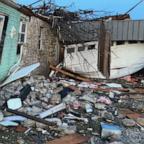Gene Governs Response to Leukemia Chemotherapy
Jan. 8 -- WEDNESDAY, Jan. 7 (HealthDay News) -- A mutation in leukemia cells predicts which children with acute lymphoblastic leukemia are more likely to relapse.
The discovery, reported online Jan. 7 in the New England Journal of Medicine, might lead to tests to help physicians fine-tune treatment for different subsets of patients.
"The treatment of acute lymphoblastic leukemia (ALL) is really one of the success stories in American and international medicine in that close to 80 percent of patients can be cured with an intensive and prolonged chemotherapy regimen," said Dr. Arthur Frankel, a professor of medicine at the Texas A&M Health Science Center College of Medicine, who was not involved with the study.
"Having said that," Frankel added, "there are two changes that would improve the quality of care and maybe improve quality of life and the cure rate. One is that you'd like to identify patients that don't need this two years of aggressive chemotherapy. At the same time, there is a need for identifying early those children and adults that would do very poorly and trying to come up with new treatments."
ALL, or cancer of white blood cells called leukocytes, is the most common pediatric cancer.
Although current therapies are effective in a majority of pediatric patients, they can be hard to endure. And still, about 20 percent of patients will relapse, and only about a third of those who relapse will survive beyond five years.
Scientists have already identified a number of genetic mutations and deletions in genes (including the one that's the subject of the new report, IKAROS) that regulate the normal development of leukocytes, said study senior author Dr. James R. Downing, scientific director of St. Jude Children's Research Hospital, in Memphis, Tenn.
"But in prior studies, we never really saw any association with outcome," Downing said.
Downing and his colleagues conducted gene analyses of 221 children with high-risk ALL who were being treated for the disease as part of another study.




